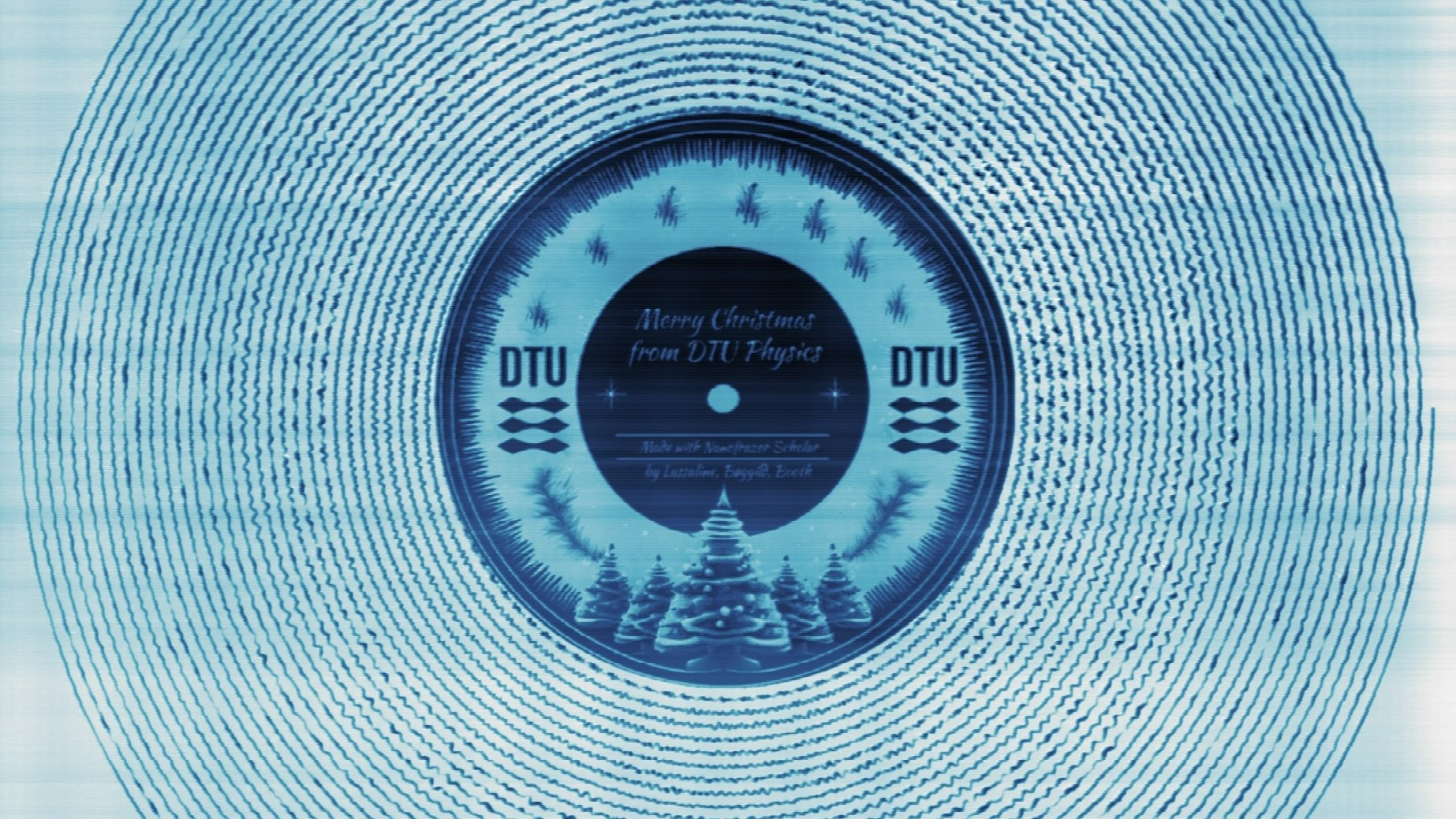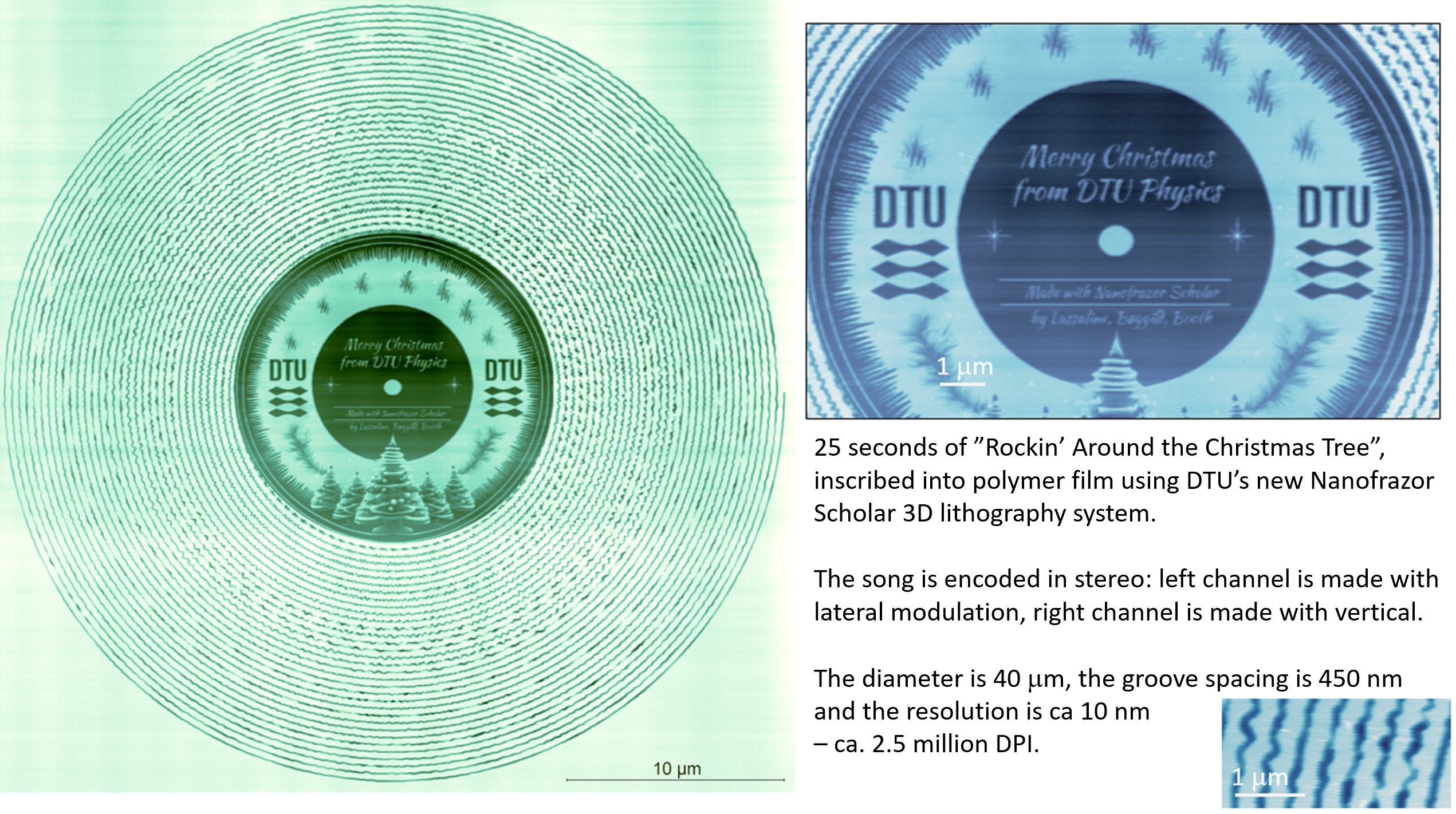Nanotechnology
DTU researchers have cut the world’s smallest Christmas record
Just in time for Christmas, a world record is achieved at DTU. Researchers have cut a Rocking Around the Christmas Tree snippet onto a 40-micrometre-wide record.


High-speed, low-cost nanostructures
The NOVO Foundation grant BIOMAG, which made the Nanofrazor dream possible, is not about cutting Christmas records or printing images of famous people. Peter Bøggild and his colleagues, Tim Booth and Nolan Lassaline, have other plans. They expect that the Nanofrazor will allow them to sculpt 3D nanostructures in extremely precise detail and do so at high speed and low cost – something that is impossible with existing tools.
“We work with 2D materials, and when these ultrathin materials are carefully laid down on the 3D landscapes, they follow the contours of the surface. In short, they curve, and that is a powerful and entirely new way of “programming” materials to do things that no one would believe were possible just fifteen years ago. For instance, when curved in just the right way, graphene behaves as if there is a giant magnetic field when there is, in fact, none. And we can curve it just the right way with the Nanofrazor,” says Peter Bøggild.
Associate professor Tim Booth adds:
“The fact that we can now accurately shape the surfaces with nanoscale precision at pretty much the speed of imagination is a game changer for us. We have many ideas for what to do next and believe that this machine will significantly speed up the prototyping of new structures. Our main goal is to develop novel magnetic sensors for detecting currents in the living brain within the BIOMAG project. Still, we also look forward to creating precisely sculpted potential landscapes with which we can better control electron waves. There is much work to do.”
Postdoc Nolan Lassaline (who cut the Christmas record), was recently awarded a DKK 2 Mio. VILLUM EXPERIMENT grant to create “quantum soap bubbles” in graphene. He will use the grant – and the Nanofrazor - to explore new ways of structuring nanomaterials and develop novel ways of manipulating electrons in atomically thin materials.
“Quantum soap bubbles are smooth electronic potentials where we add artificially tailored disorders. By doing so, we can manipulate how electrons flow in graphene. We hope to understand how electrons move in engineered disordered potentials and explore if this could become a new platform for advanced neural networks and quantum information processing.”
The Nanofrazor system is now part of the DTU Physics NANOMADE’s unique fabrication facility for air-sensitive 2D materials and devices and part of E-MAT, a greater ecosystem for air-sensitive nanomaterials processing and fabrication led by Prof. Nini Pryds, DTU Energy.
Contact
Peter Bøggild Professor, Section leader Department of Physics Mobile: +45 21362798 pbog@dtu.dk
Timothy John Booth Associate Professor Department of Physics Phone: +45 45256888 tibo@dtu.dk
Nolan Lassaline Guest from other DTU department Department of Energy Conversion and Storage nlasso@dtu.dk